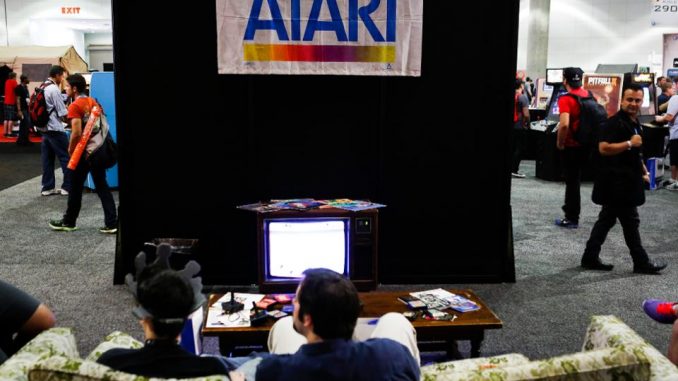

Yesterday, I reported on the recent GamesBeat interview with Atari CEO Fred Chesnais, a chat that confirmed the existence of an upcoming Atari console. The news came as a bit of a surprise, and since that break, speculation has been running wild. Forbes’ own Paul Tassi posted an interesting take on the whole situation, and honestly, I think he makes a great point—the market is indeed full, and introducing a brand new platform, especially one potentially poised to take on those of industry giants like Sony and Microsoft, may be an exercise in overzealous futility. And yet I can’t sit still, so break out the one-button joysticks and dusty Combat cartridges—we’re going to play devil’s advocate.
Even with everything seemingly stacked against such a machine (and there’s a lot, believe me), I still can’t manage to shake my naive excitement. I’ve been gaming for a long time, since the late 80s if I’m counting right, so the prospect of a legitimate Atari revival has set my imagination on fire. I know they’re not even close to the same company that released the 2600 and the Jaguar (or the criminally underappreciated Lynx handheld), but I feel like the potential for something compelling lay not only within this recent hardware announcement, but also amongst the remnant echos of Atari’s yesteryear 8-bit greatness. Before the infamous video game market crash of 1983, they all but owned the digital entertainment market, so who’s to say that they can’t stage a screaming comeback?
The deck is, without a doubt, stacked against such an impromptu market breach. Why? Because as it stands, Sony and Microsoft are in a constant and incredibly expensive battle for console market dominance. And while Nintendo occupies some strange, PG-rated corner of said market, one filled with jovial plumbers, wacky hardware innovation and awful online implementation, they absolutely dominate that space with consistently good first-party titles and an insane degree of consumer loyalty. When paring out the market shares, precious space for an additional dedicated gaming hardware option shrinks to almost nothing. And for the most part, it’s been this way since Sega bowed out of the race back in 2001 with its legendary Dreamcast. So beyond mobile devices and PC, we have three major options for gaming platforms. But what if people want more? What if they’re eager to try something different but lack the opportunity to jump ship?
